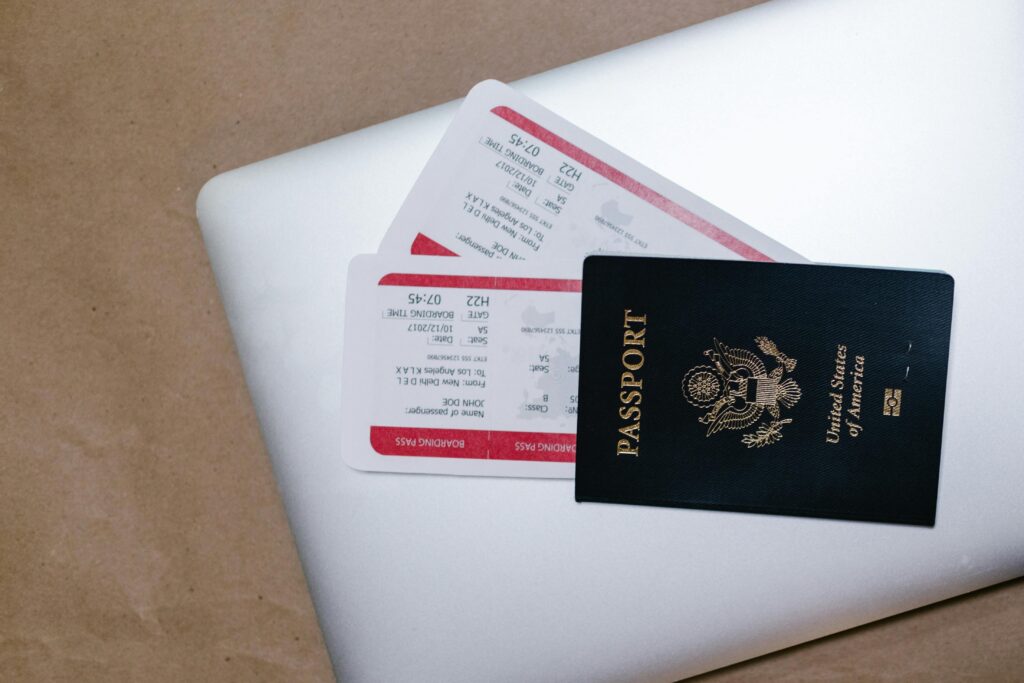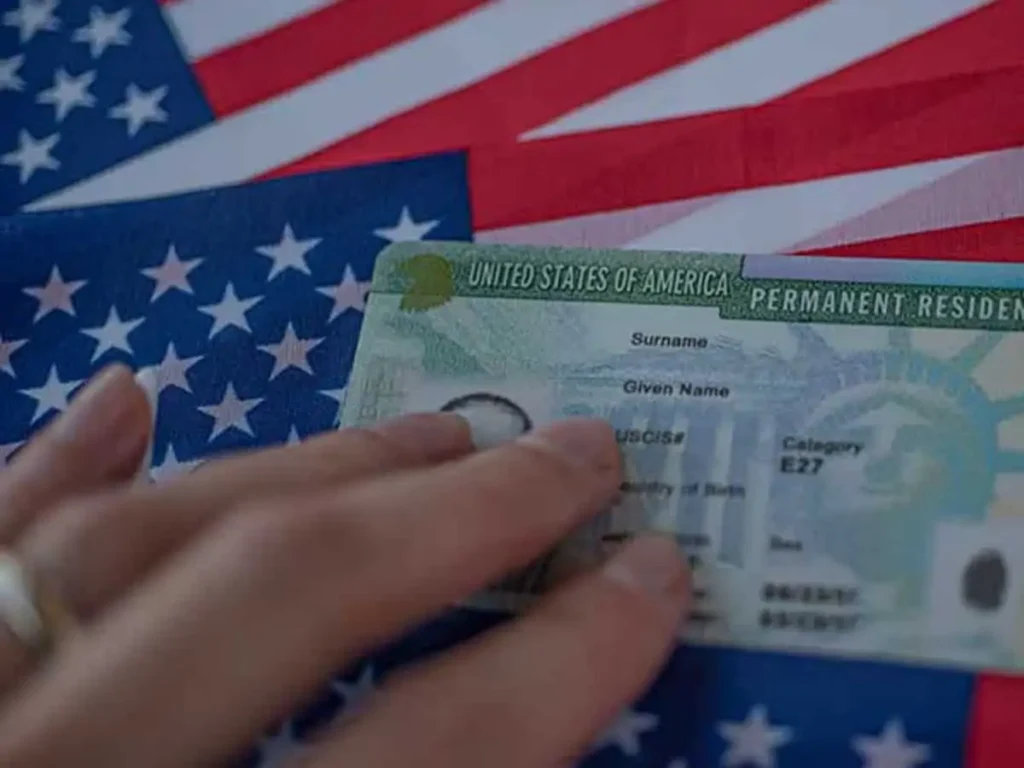Cómo los ingenieros pueden beneficiarse de la visa EB2 NIW
Si eres un ingeniero buscando oportunidades en Estados Unidos, la visa EB2 NIW podría ser tu pasaporte al éxito profesional. Este tipo de visa, conocido como Exención por Interés Nacional, ofrece una vía única para que ingenieros talentosos obtengan la residencia permanente sin necesidad de una oferta laboral específica.
La demanda de ingenieros en Estados Unidos es alta, y el EB2 NIW se presenta como una solución ideal para aquellos profesionales con habilidades excepcionales que pueden contribuir significativamente al desarrollo del país. Según un artículo del Washington Post, la escasez de ingenieros en sectores como la tecnología y los semiconductores es uno de los mayores desafíos que enfrentan las empresas estadounidenses. Esto crea una oportunidad invaluable para ingenieros calificados que deseen establecerse en el país.
En este artículo, exploraremos cómo el EB2 NIW puede abrir puertas a los ingenieros, centrándonos en los requisitos necesarios y los beneficios que ofrece. Desde la validación de títulos hasta la demostración de habilidades excepcionales, te guiaremos a través de cada paso del proceso para que puedas aprovechar esta oportunidad al máximo.
Si estás listo para avanzar en tu carrera y asegurar un futuro prometedor para ti y tu familia en Estados Unidos, sigue leyendo para descubrir todo lo que necesitas saber sobre la visa EB2 NIW para ingenieros.
¿Qué es el visado EB2 NIW y cómo beneficia a los ingenieros?
El visado EB2 NIW (Exención por Interés Nacional) es una opción de inmigración que permite a ingenieros calificados obtener la residencia permanente en Estados Unidos sin necesidad de una oferta laboral específica. Este visado es ideal para aquellos profesionales que pueden demostrar habilidades excepcionales y contribuciones significativas en su campo. A continuación, exploraremos los beneficios clave de este visado y cómo puede abrir nuevas oportunidades profesionales para los ingenieros.
Beneficios del visado EB2 NIW para ingenieros
El visado EB2 NIW ofrece múltiples beneficios a los ingenieros que buscan establecerse en Estados Unidos. Algunos de los beneficios más destacados incluyen:
- Residencia permanente: Los ingenieros pueden obtener la residencia permanente sin necesidad de una oferta de trabajo específica, lo que simplifica el proceso de inmigración.
- Reconocimiento de habilidades excepcionales: Este visado reconoce y valora las habilidades y contribuciones excepcionales de los ingenieros en su campo.
- Oportunidades profesionales: Los ingenieros con visado EB2 NIW pueden acceder a una amplia gama de oportunidades laborales en Estados Unidos, especialmente en sectores con alta demanda de profesionales calificados.
- Flexibilidad laboral: Al no requerir una oferta de trabajo específica, los ingenieros tienen la libertad de buscar empleo en diferentes empresas y sectores.
Ejemplos de ingenieros beneficiados por el visado EB2 NIW
Muchos ingenieros han logrado obtener el visado EB2 NIW y han experimentado un impacto positivo en sus carreras. Por ejemplo, Juan Pérez, un ingeniero mecánico de Brasil, obtuvo el visado EB2 NIW gracias a sus innovaciones en el diseño de sistemas de energía renovable. Desde su llegada a Estados Unidos, Juan ha trabajado en proyectos de gran envergadura y ha contribuido significativamente al avance de la tecnología sostenible.
Otro caso es el de María Gómez, una ingeniera civil de Colombia, quien obtuvo el visado EB2 NIW por sus investigaciones en infraestructura resiliente. Su trabajo ha sido fundamental para mejorar la seguridad y eficiencia de las estructuras en áreas propensas a desastres naturales.
Demanda de ingenieros en Estados Unidos
La demanda de ingenieros en Estados Unidos es alta, especialmente en sectores como la tecnología y los semiconductores. Según un artículo del Washington Post, se estima que Estados Unidos necesitará al menos 50,000 nuevos ingenieros de semiconductores en los próximos cinco años para satisfacer la demanda de las nuevas fábricas planificadas. Esta brecha en la fuerza laboral representa una oportunidad invaluable para ingenieros calificados que deseen establecerse en el país.
El visado EB2 NIW ayuda a cubrir esta necesidad al permitir que ingenieros talentosos de todo el mundo contribuyan al desarrollo económico y tecnológico de Estados Unidos. Al eliminar la necesidad de una oferta de trabajo específica, este visado facilita la llegada de profesionales altamente calificados que pueden aportar sus conocimientos y experiencia a la industria estadounidense.
En resumen, el visado EB2 NIW es una excelente opción para ingenieros que buscan avanzar en sus carreras y establecerse en Estados Unidos. Con sus múltiples beneficios y la alta demanda de ingenieros en el país, este visado ofrece una oportunidad única para profesionales con habilidades excepcionales y contribuciones significativas en su campo.
Cómo demostrar habilidades excepcionales y contribuciones significativas
Para obtener el visado EB2 NIW para ingenieros, es crucial demostrar habilidades excepcionales y contribuciones significativas en tu campo. Este proceso puede parecer desalentador, pero con la preparación adecuada y la presentación de pruebas convincentes, puedes aumentar tus posibilidades de éxito. A continuación, te ofrecemos una guía detallada sobre cómo hacerlo.
Presentación de logros profesionales
Uno de los aspectos más importantes para demostrar tus habilidades excepcionales es presentar tus logros profesionales de manera efectiva. Esto puede incluir:
- Patentes: Si has desarrollado tecnologías innovadoras o procesos patentados, asegúrate de incluir esta información en tu solicitud. Las patentes son una prueba tangible de tu capacidad para contribuir significativamente a tu campo.
- Publicaciones: Artículos en revistas científicas, capítulos de libros y presentaciones en conferencias internacionales son ejemplos de cómo puedes demostrar tu impacto en la comunidad académica y profesional.
- Premios y reconocimientos: Cualquier premio o reconocimiento que hayas recibido por tu trabajo es una excelente manera de demostrar tu excelencia profesional.
Demostración del beneficio para EE.UU.
Otro aspecto clave del proceso de solicitud del EB2 NIW es demostrar cómo tu presencia en Estados Unidos beneficiará al país. Aquí hay algunas estrategias para hacerlo:
- Proyectos innovadores: Describe cualquier proyecto en el que hayas trabajado que tenga el potencial de beneficiar a la economía, la tecnología o la sociedad estadounidense.
- Colaboraciones: Si has colaborado con instituciones estadounidenses o has participado en proyectos que involucren a empresas o universidades de EE.UU., asegúrate de destacar estas conexiones.
- Impacto económico: Proporciona datos y estadísticas que muestren cómo tu trabajo ha generado empleo, impulsado la innovación o mejorado la competitividad de las empresas en las que has trabajado.
Consejos para presentar la información de manera efectiva
La forma en que presentas tu información puede marcar una gran diferencia en el éxito de tu solicitud. Aquí tienes algunos consejos para hacerlo de manera efectiva:
- Organización: Asegúrate de que tu documentación esté bien organizada y sea fácil de seguir. Utiliza encabezados claros y listas para resaltar puntos importantes.
- Claridad: Sé claro y conciso en tus descripciones. Evita el uso de jerga técnica que pueda ser difícil de entender para los revisores de la solicitud.
- Apoyo visual: Incluye gráficos, tablas y diagramas cuando sea posible para ilustrar tus logros y el impacto de tu trabajo.
Ejemplos de ingenieros exitosos
Para ilustrar cómo otros ingenieros han demostrado sus habilidades excepcionales y contribuciones significativas, aquí tienes algunos ejemplos:
- Juan Pérez: Ingeniero mecánico de Brasil que obtuvo el visado EB2 NIW gracias a sus innovaciones en el diseño de sistemas de energía renovable. Sus patentes y publicaciones en revistas de alto impacto fueron clave para su éxito.
- María Gómez: Ingeniera civil de Colombia que obtuvo el visado EB2 NIW por sus investigaciones en infraestructura resiliente. Su trabajo ha sido fundamental para mejorar la seguridad y eficiencia de las estructuras en áreas propensas a desastres naturales.
Siguiendo estos consejos y ejemplos, puedes preparar una solicitud sólida que demuestre tus habilidades excepcionales y contribuciones significativas, aumentando así tus posibilidades de obtener el visado EB2 NIW para ingenieros.
Consejos prácticos para una solicitud exitosa
Presentar una solicitud exitosa para el visado EB2 NIW requiere una planificación cuidadosa y atención a los detalles. Desde la preparación de la documentación hasta la presentación de la solicitud, cada paso es crucial para aumentar tus posibilidades de éxito.
A continuación, te ofrecemos una lista de consejos prácticos para cada etapa del proceso de solicitud, incluyendo errores comunes a evitar y mejores prácticas para aumentar las posibilidades de éxito.
Preparación de la documentación
La preparación de la documentación es una de las etapas más importantes del proceso de solicitud del EB2 NIW para ingenieros. Aquí tienes algunos consejos para asegurarte de que tu documentación esté completa y bien organizada:
- Reúne todos los documentos necesarios: Asegúrate de tener todos los documentos requeridos, como diplomas, certificaciones, cartas de recomendación y pruebas de tus logros profesionales.
- Traduce tus documentos: Si tus documentos están en un idioma diferente al inglés, asegúrate de traducirlos por un traductor certificado.
- Organiza tu documentación: Utiliza carpetas y separadores para mantener tus documentos organizados y fáciles de encontrar.
Redacción de la carta de presentación
La carta de presentación es tu oportunidad para destacar tus habilidades y explicar por qué eres un candidato ideal para el visado EB2 NIW. Aquí tienes algunos consejos para redactar una carta de presentación efectiva:
- Sé claro y conciso: Evita el uso de jerga técnica y asegúrate de que tu carta sea fácil de entender.
- Destaca tus logros: Menciona tus logros más importantes y cómo han impactado en tu campo de trabajo.
- Explica tu contribución a EE.UU.: Describe cómo tu presencia en Estados Unidos beneficiará al país, ya sea a través de la creación de empleo, la innovación tecnológica o la mejora de la competitividad.
Errores comunes a evitar
Evitar errores comunes puede aumentar significativamente tus posibilidades de éxito. Aquí tienes algunos errores que debes evitar al presentar tu solicitud:
- Documentación incompleta: Asegúrate de que todos los documentos requeridos estén incluidos y correctamente organizados.
- Falta de claridad en la carta de presentación: Sé claro y directo en tu carta de presentación, evitando el uso de jerga técnica y explicaciones complicadas.
- No demostrar tu impacto: Proporciona ejemplos concretos de tus logros y cómo han beneficiado a tu campo de trabajo.
Mejores prácticas para una solicitud exitosa
Seguir las mejores prácticas puede aumentar tus posibilidades de éxito en la solicitud del visado EB2 NIW para ingenieros. Aquí tienes algunas recomendaciones:
- Consulta con un experto: Considera la posibilidad de consultar con un abogado de inmigración especializado en el visado EB2 NIW para asegurarte de que tu solicitud esté bien preparada.
- Revisa y revisa nuevamente: Antes de enviar tu solicitud, revisa todos los documentos y asegúrate de que todo esté en orden.
- Sé paciente y perseverante: El proceso de solicitud puede ser largo y complicado, pero mantener una actitud positiva y perseverante puede marcar la diferencia.
Siguiendo estos consejos y evitando errores comunes, puedes aumentar tus posibilidades de éxito en la obtención del visado EB2 NIW para ingenieros. Para más información y asistencia personalizada, visita Cortes Immigration Law Firm.
Aprovecha la oportunidad del visado EB2 NIW para ingenieros
El visado EB2 NIW ofrece una oportunidad única para ingenieros que buscan avanzar en sus carreras en EE.UU. Siguiendo los consejos y mejores prácticas mencionados a lo largo de este artículo, puedes aumentar tus posibilidades de éxito y asegurar un futuro prometedor para ti y tu familia.
Para resumir, aquí tienes los puntos clave que debes recordar:
- Residencia permanente: La visa EB2 NIW permite obtener la residencia permanente sin necesidad de una oferta de trabajo específica.
- Reconocimiento de habilidades: Este visado valora y reconoce las habilidades excepcionales y contribuciones significativas de los ingenieros.
- Oportunidades profesionales: Acceso a una amplia gama de oportunidades laborales en sectores con alta demanda de ingenieros calificados.
- Flexibilidad laboral: Libertad para buscar empleo en diferentes empresas y sectores sin estar atado a una oferta laboral específica.
Siguiendo estos pasos y consejos, puedes preparar una solicitud sólida que demuestre tus habilidades excepcionales y contribuciones significativas, aumentando así tus posibilidades de obtener el visado EB2 NIW para ingenieros.
En Cortes Immigration Law Firm, estamos aquí para ayudarte en cada paso del proceso. No dudes en contactarnos para obtener asistencia profesional y personalizada. ¡Empieza tu solicitud hoy mismo y da el primer paso hacia un futuro brillante en Estados Unidos!
Cómo los ingenieros pueden beneficiarse de la visa EB2 NIW Read More »










